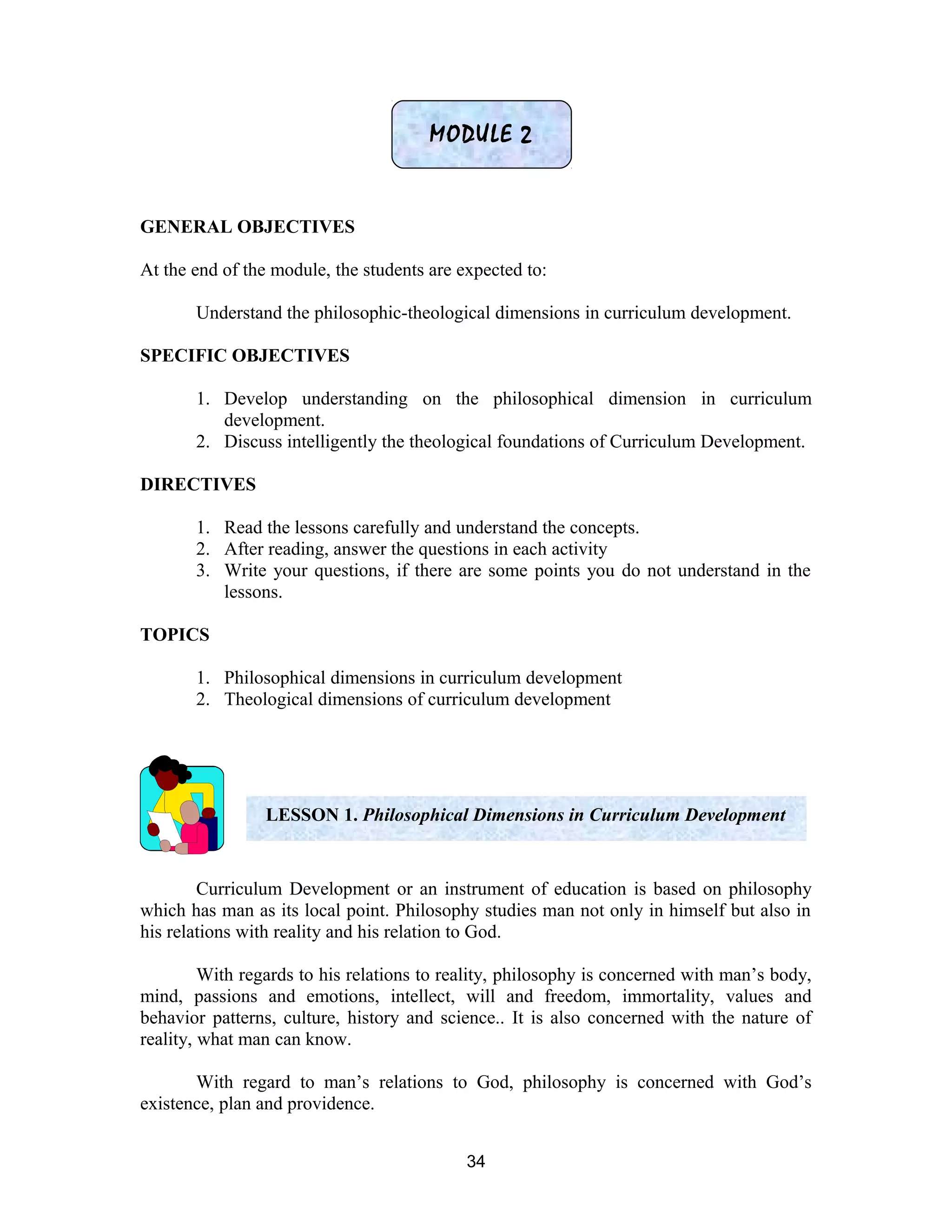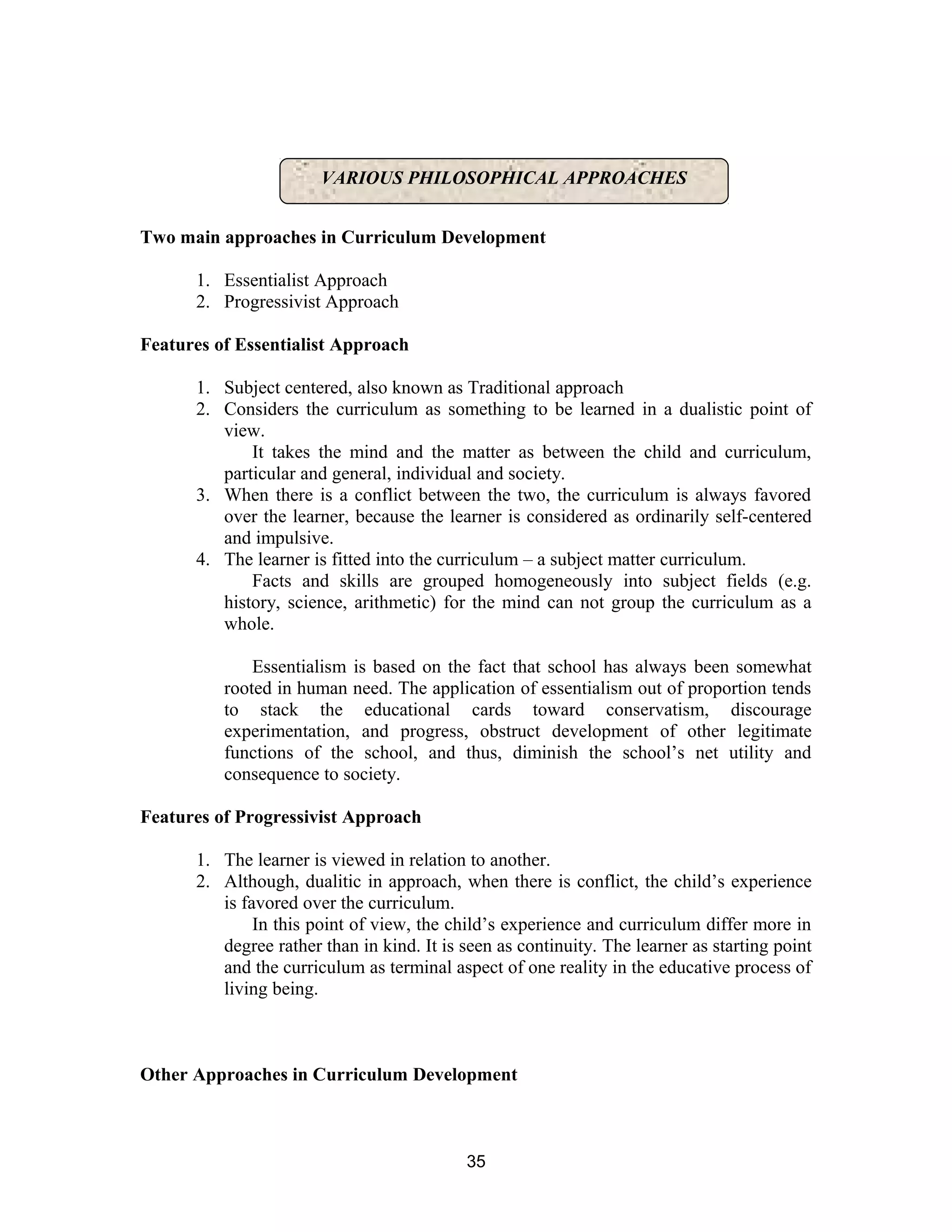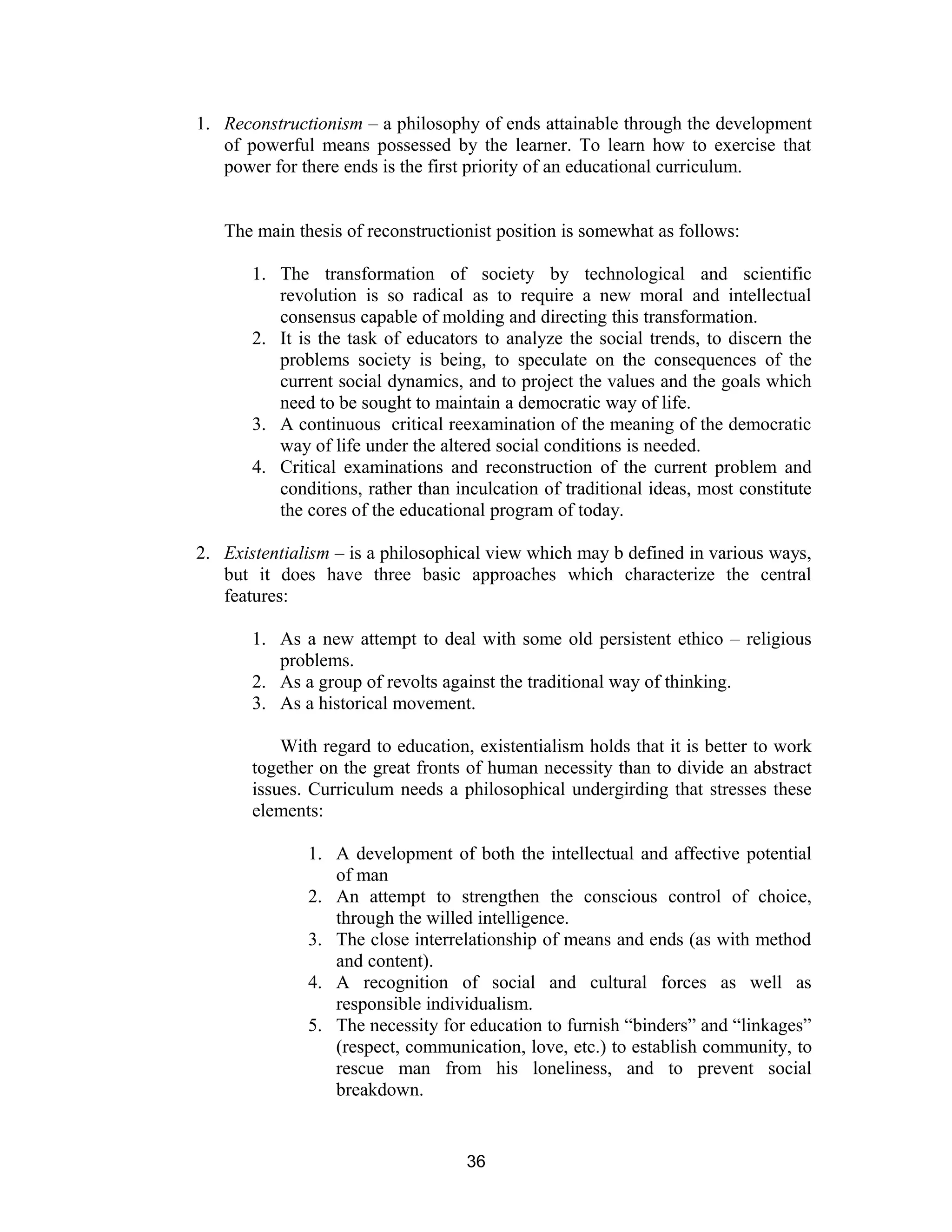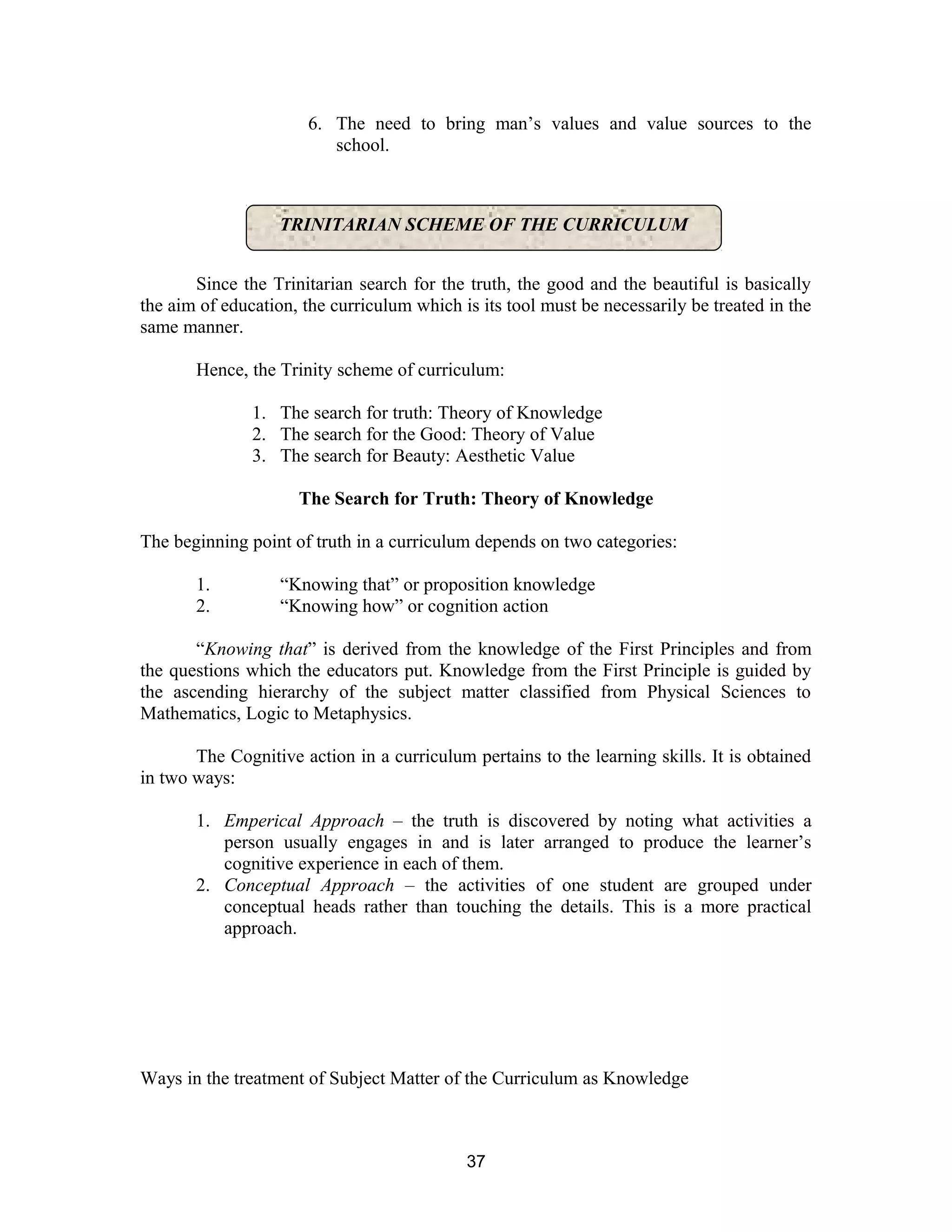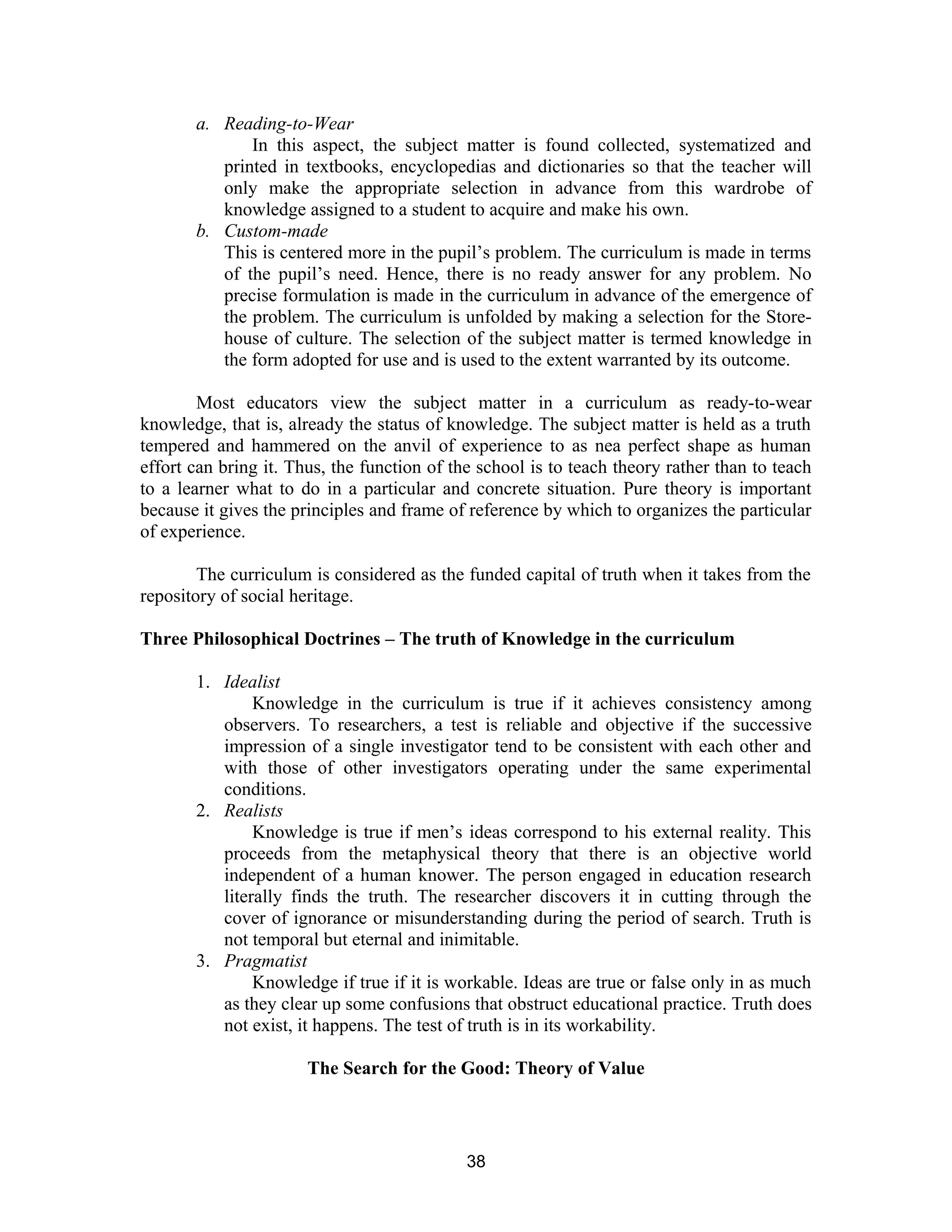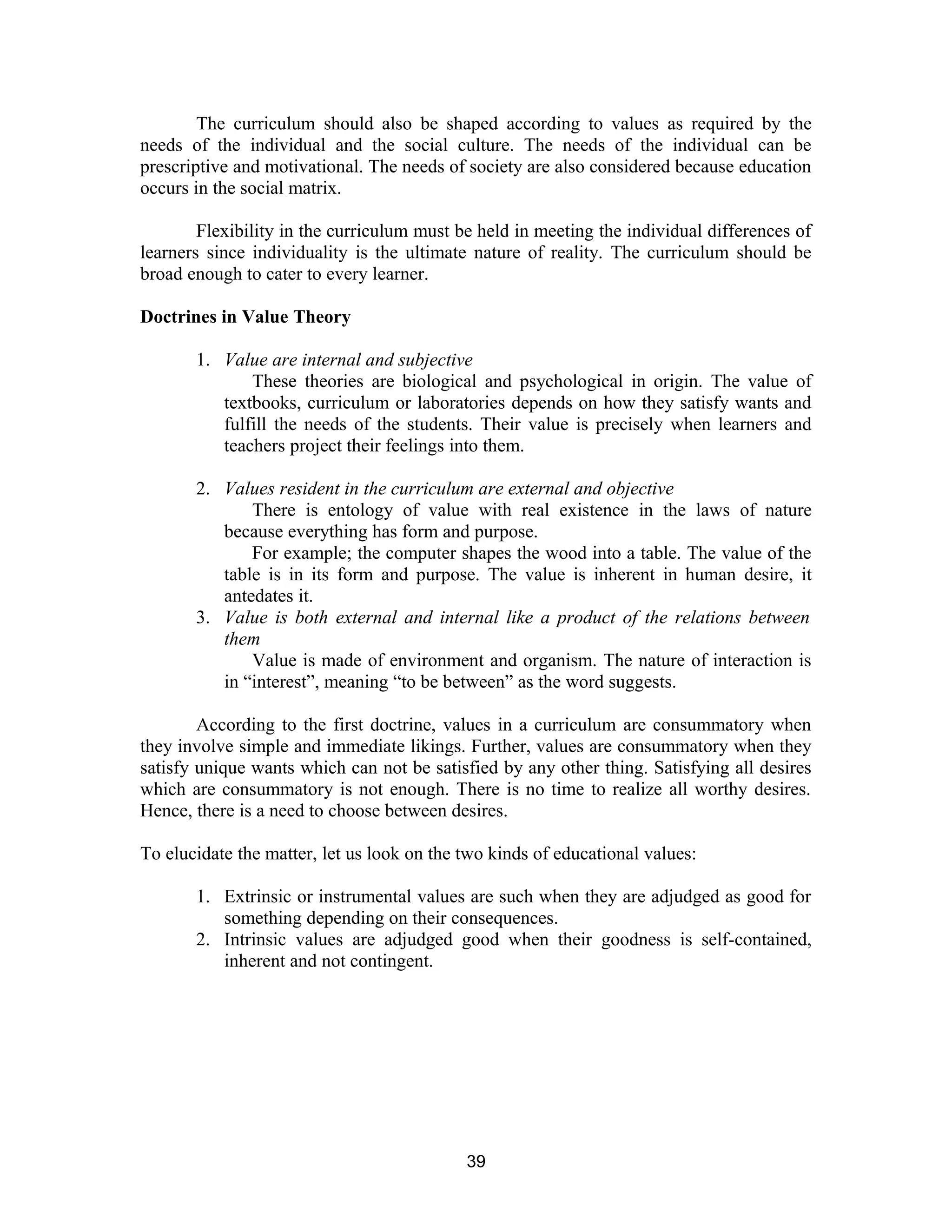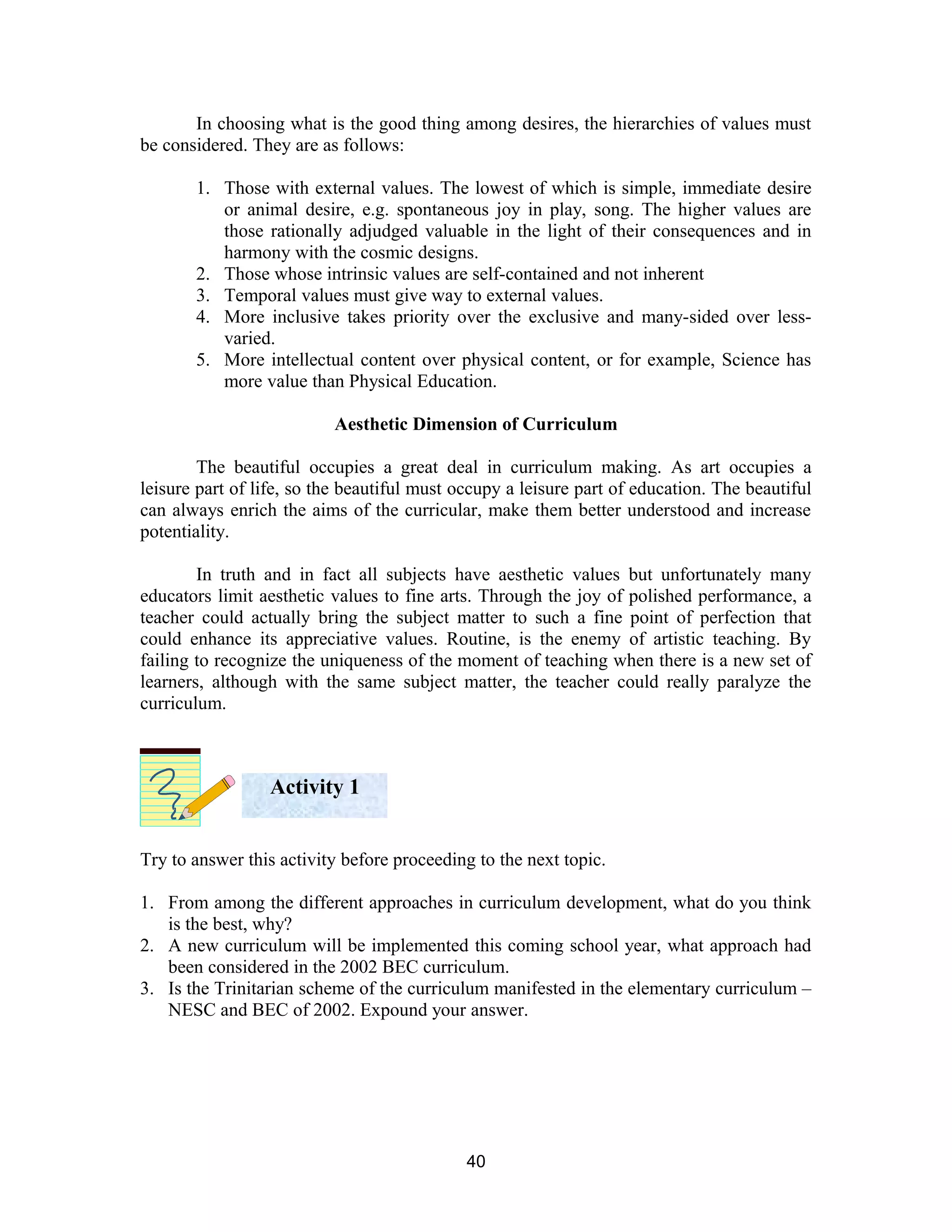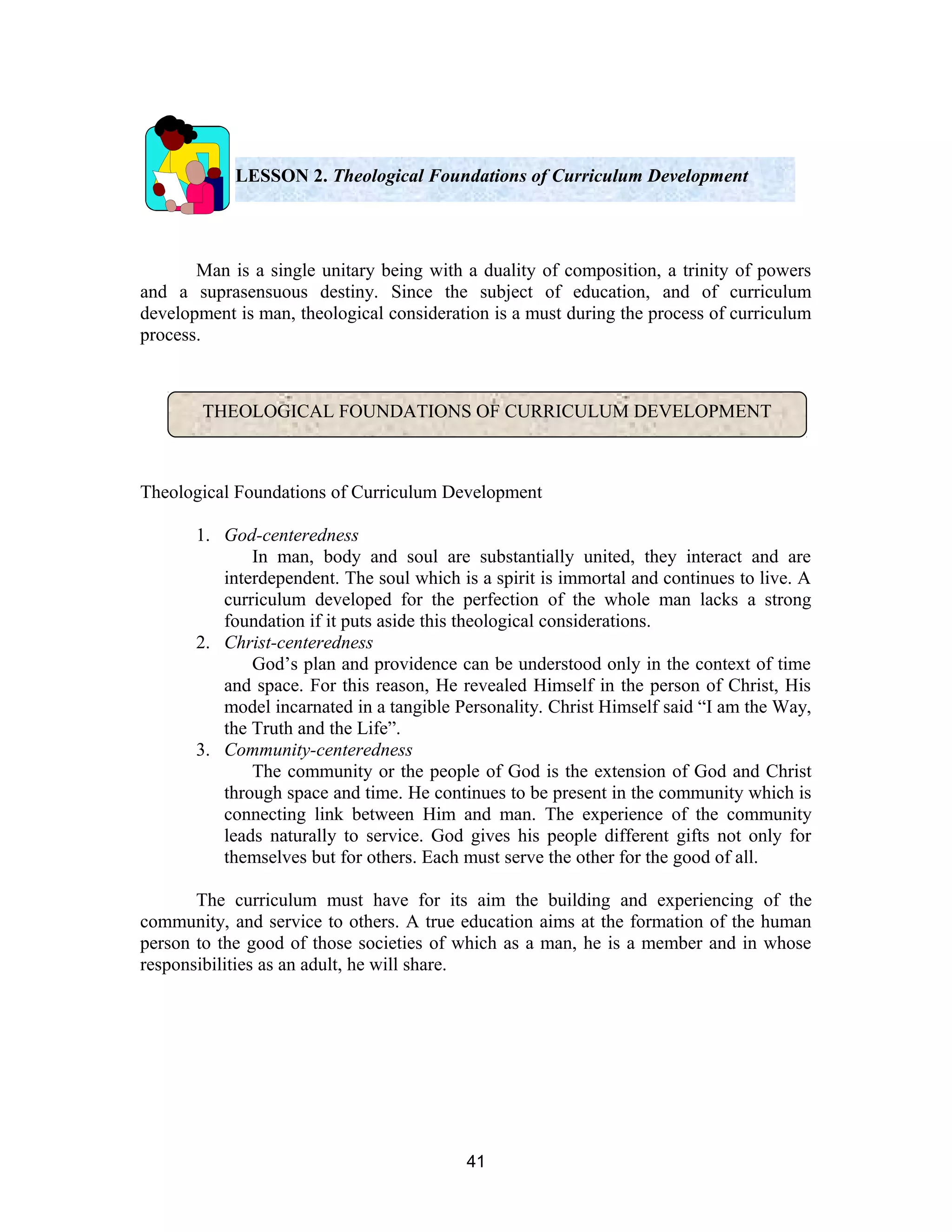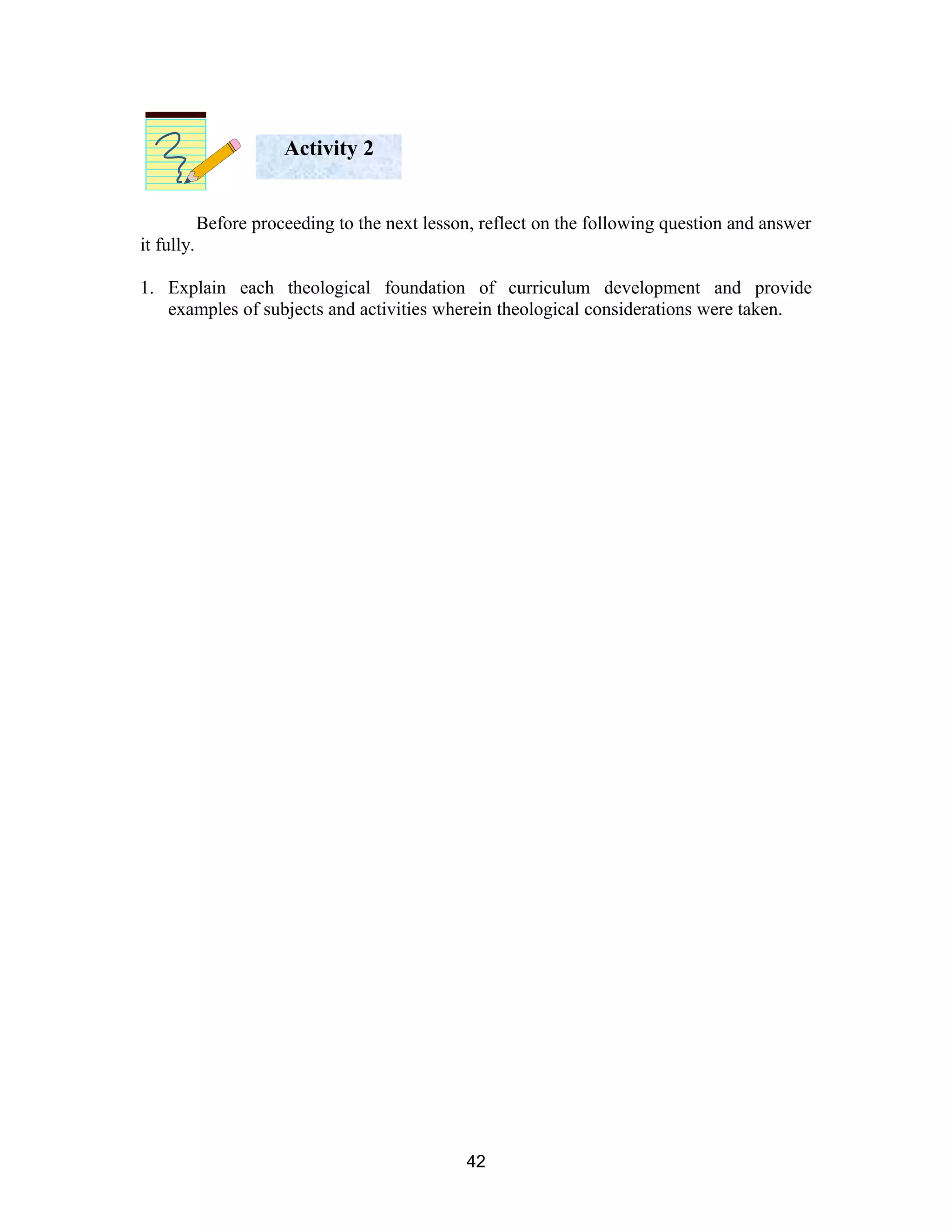The document provides an overview of Module 2 of a curriculum development course. The module aims to help students understand the philosophical and theological dimensions of curriculum development.
It covers topics such as the philosophical approaches of essentialism and progressivism; other approaches like reconstructionism and existentialism; and the Trinitarian scheme for organizing a curriculum around truth, goodness, and beauty.
The document also discusses the theological foundations of curriculum development including being God-centered, Christ-centered, and community-centered. Examples of how theological considerations can be incorporated into subjects and activities are requested in an activity question.
